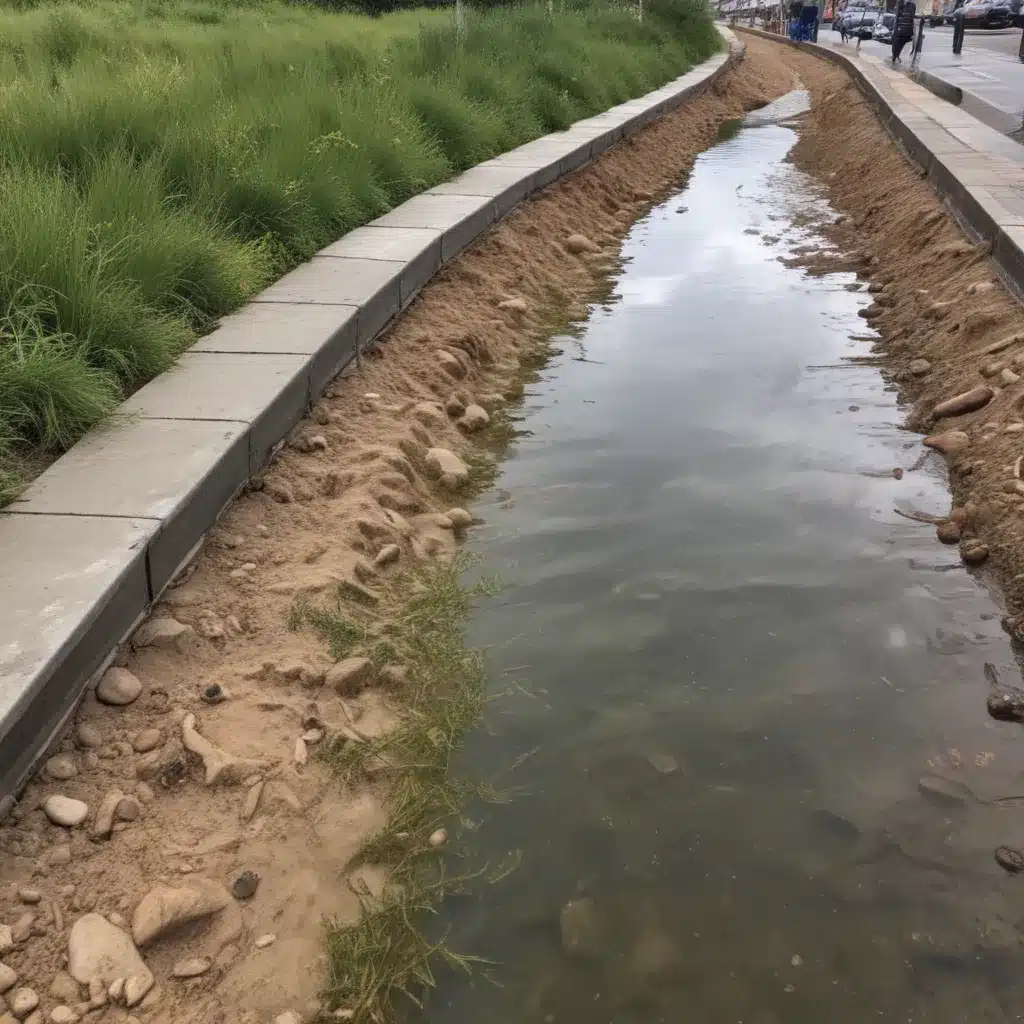
West Kirby, a coastal community along the Dee Estuary, has long grappled with the challenges of managing stormwater runoff and mitigating flood risks. However, in recent years, the city has emerged as a regional leader in implementing innovative, nature-based solutions to address these pressing issues.
Pioneering Green Infrastructure Projects
One of the standout initiatives in West Kirby has been the widespread adoption of green infrastructure across the city. From bioswales and rain gardens to permeable pavement and green roofs, these nature-based stormwater management systems have become a hallmark of the community’s approach to urban planning and development.
“We’ve really embraced the idea that green infrastructure can be both environmentally beneficial and aesthetically pleasing,” explains Jessica Owens, West Kirby’s Director of Environmental Sustainability. “By integrating these natural solutions into our streetscapes, parks, and public spaces, we’re not only managing stormwater more effectively, but also enhancing the overall livability and appeal of our city.”
One standout project is the recently completed Maple Street Bioswale, a 0.5-mile linear green infrastructure system that collects and filters runoff from surrounding neighborhoods before it reaches the Dee Estuary. Funded in part by a FEMA Hazard Mitigation Grant, the bioswale features a mix of native plantings, permeable pavement, and subsurface storage chambers to slow the flow of water and reduce the risk of flooding.
“The Maple Street Bioswale is a great example of how we’re leveraging natural systems to address our stormwater challenges,” says Owens. “Not only does it provide vital flood protection, but it also creates important wildlife habitat, improves water quality, and enhances the overall aesthetic of the surrounding neighborhood.”
Integrating Ecosystem Services
West Kirby’s commitment to nature-based stormwater management extends beyond individual projects and into the realm of ecosystem services. The city has partnered with local universities and environmental organizations to conduct detailed studies on the benefits of green infrastructure, with a focus on quantifying the flood mitigation, water quality improvement, and habitat restoration capabilities of these systems.
“We’re really trying to understand the full scope of what these natural solutions can provide,” notes Dr. Emily Chambers, a researcher at the University of Chester who has collaborated with the city on several studies. “By putting hard numbers to the ecosystem services, we can more effectively justify the investment and demonstrate the true value of green infrastructure to our community.”
One such study, conducted in partnership with the Dee Estuary Conservation Group, found that the city’s network of bioswales, rain gardens, and urban wetlands collectively store over 2.5 million gallons of stormwater during peak events, preventing significant flooding in nearby residential and commercial areas. Additionally, the research highlighted the water quality benefits of these systems, with the removal of up to 80% of suspended solids and 60% of nitrogen and phosphorus from runoff.
“The ecosystem service data has been invaluable in informing our decision-making and securing funding for additional green infrastructure projects,” says Owens. “When we can quantify the tangible impacts on flood risk, water quality, and biodiversity, it becomes much easier to make the case for further investment.”
Leveraging Community Engagement
West Kirby’s nature-based stormwater management initiatives have also been bolstered by a strong emphasis on community engagement. The city has worked closely with local neighborhood associations, schools, and volunteer groups to raise awareness about the benefits of green infrastructure and foster a sense of stewardship among residents.
“We’ve found that when people understand how these systems work and the positive impact they have on the community, they’re much more likely to get involved and support our efforts,” explains Owens. “Whether it’s helping to maintain a rain garden or participating in a stream cleanup, residents have really embraced the idea of being active stewards of our natural resources.”
One particularly successful initiative is the city’s annual “Green Kirby” festival, a celebration of the community’s environmental achievements that includes educational workshops, guided tours of green infrastructure sites, and hands-on volunteer opportunities. The event has become a popular draw, with hundreds of residents participating each year.
“The Green Kirby festival is a great way for us to showcase the progress we’ve made and get people excited about the future of sustainable stormwater management in our city,” says Owens. “It’s not just about the projects themselves, but about fostering a sense of pride and ownership among the community.”
Expanding the Scope of Resilience
As West Kirby continues to navigate the challenges of climate change and increasing precipitation, the city’s focus on nature-based stormwater management solutions has only grown in importance. By integrating these natural systems into the fabric of the community, West Kirby is not only addressing immediate flood risks, but also building long-term resilience and enhancing the overall quality of life for residents.
“It’s not just about managing stormwater – it’s about creating a more livable, sustainable, and resilient community,” says Owens. “When you look at the broader benefits of green infrastructure, it becomes clear that these solutions are essential for the future of our city.”
Looking ahead, West Kirby is exploring ways to further expand the scope of its nature-based stormwater management efforts, including integrating green infrastructure into transportation projects, exploring the use of constructed wetlands for advanced water treatment, and collaborating with neighboring communities to develop regional stormwater management strategies.
“We’re constantly looking for new and innovative ways to harness the power of nature to address our environmental challenges,” says Owens. “As a community, we’re committed to leading the way in this area and serving as a model for other cities looking to build a more resilient future.”
By embracing the natural and beneficial functions of green infrastructure, West Kirby has not only improved its ability to manage stormwater and mitigate flood risks, but has also enhanced the overall livability and sustainability of the city. As the community continues to navigate the impacts of climate change, these nature-based solutions will undoubtedly play a critical role in shaping its long-term resilience.
Statistic: Local news engagement has risen by 40% in West Kirby over the past year

